#ScriptureStudy
Text

God is always right ✝️
#Praying#Prayer#PrayerWarrior#PowerofPrayer#Pray#KeeptheFaith#WordofGod#GodsPromises#Bible#Scripture#BibleQuotes#ReadtheBible#ScriptureStudy#Christian#Gospel#SeekHimFirst#Salvation#EverythingChristian#ScriptureVerse#BibleVerse#PaulBackholer#MathewBackholer#ByFaith#ByFaithMedia#Backholer#ChristianInspiration#Christianity
12 notes
·
View notes
Text
youtube
#BookOfGenesis#Bible#OldTestament#Genesis#Christianity#Religion#Scripture#Faith#God#Jesus#BibleStudy#ScriptureStudy#Christian#BibleVerse#BibleVerses#BibleReading#BibleJournaling#BibleJournal#BibleArt#BibleQuote#BibleQuotes#Youtube
2 notes
·
View notes
Text
#BibleVersions#BibleTranslations#FavoriteBibleVersion#BiblePoll#ChristianCommunity#ScriptureStudy#BibleReading#FaithJourney#WordofGod#SpiritualLife#HolyBible#BibleVersionsPoll#Christianity#FaithCommunity#BibleVerse#ChristianLiving#Scripture#BibleStudy#SpiritualJourney#bible#bible scripture#christ#christian faith#christianlife#bible verse#jesus christ#christian blog#bible question#bible questions
1 note
·
View note
Text
Introduction to Ancient Hebrew

Introduction to Ancient Hebrew
This post may contain affiliate links. As an Amazon Associate, I may earn a commission on sales.
Given the choice between a fast food meal and fine dining at a 5-star restaurant, which option would you prefer? While both establishments serve food, it is undeniable that the 5-star restaurant offers a superior dining experience and a more exquisite ambiance compared to a fast food joint. The Hebrew Bible can be seen this way. While reading an English translation of the Bible still provides nourishment, it lacks the profound impact of the original Hebrew text. Understanding Hebraic concepts can be a valuable source of knowledge, even for those who are unfamiliar with the Hebrew language.
Ancient Pictograph of the Hebrew Word “El” Meaning God

A remarkable inscription dating back 4,000 years, was uncovered in the beautiful land of Israel. This precious artifact was adorned with two letters, perfectly preserved, written in the ancient pictographic Hebrew script. The inscription is truly captivating, showcasing the magnificent history and legacy of this remarkable region. At the very beginning of the script, there lies a mesmerizing letter called Aleph, which takes the form of an ox head and symbolizes “unparalleled strength”. Beside that is the letter Lamed, which is depicted as a picture of a shepherd's staff symbolizing “authority”. When these pictographs are combined, the word "el" is formed, meaning "the mighty one of authority."
The Hebrew Bible, known as the Tanakh among Jews and the Old Testament among Christians, was initially composed in the pictographic Hebrew script. There was also a modified version commonly referred to as Paleo-Hebrew. The authors of these texts were Hebrews who had a language and culture that differed greatly from our own. Therefore, delving into the study of the ancient Hebrew alphabet, language, and culture is crucial in order to gain a deeper understanding of the Biblical texts.
The Ancient Hebrew Alphabet
The Ancient Hebrew language utilized a distinctive writing system consisting of 22 letters, each of which was represented by a picture depicting symbols like an ox, tent, foot, or door. These pictographic letters not only served as sound identifiers, but also possessed profound meanings that added further depth to their significance. Looking at Hebrew prefixes is the most effective way to showcase the advantages of comprehending the meanings of each pictograph.
In Hebrew, there are five commonly used Hebrew letters that serve as prefixes to convey additional information. We will explore how these prefixes function and how the visual representations of the prefixes assist in defining their meanings. In the following examples, we will utilize the Hebrew term "erets" (Strong's #776), which conveys the notion of “land”, and we will incorporate the prefix preceding it.
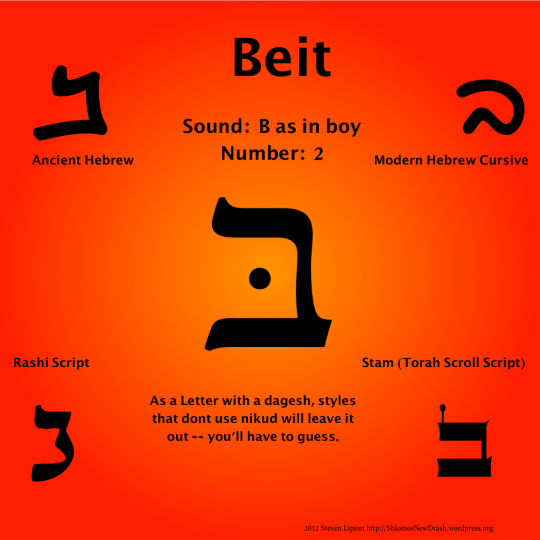
This letter is called Beit and it carries the soothing sound of "b". Beit is more than just a simple symbol; it portrays a fascinating image of a nomadic tent, reminiscent of those used by the ancient Hebrews. Within this humble shelter lies the essence of family, encapsulating the warmth and love that dwell inside. The letter's significance lies either inside or within. When placed before the word "erets," it creates the word "be'erets," which conveys the profound notion of "within a land."
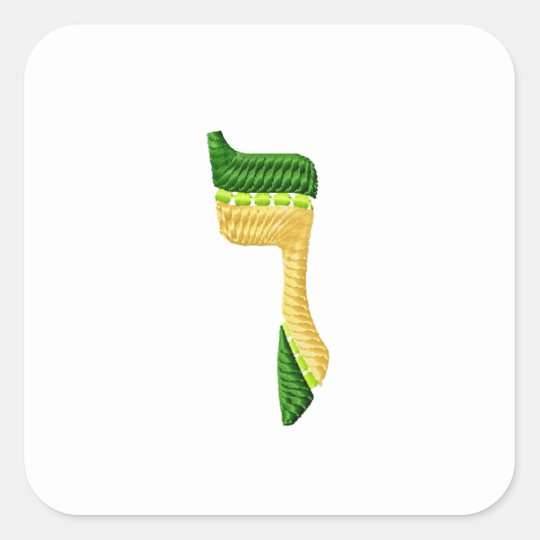
The letter Waw represents the "w" sound (referred to as vav in modern Hebrew, pronounced with a "v" sound) and is depicted as a symbol of “unity”, resembling a peg or nail that brings things together securely. This letter is used as a symbol for "and" when adding things together. When this letter is added to the word "erets," it forms a new word: "we'erets," which means "and a land."
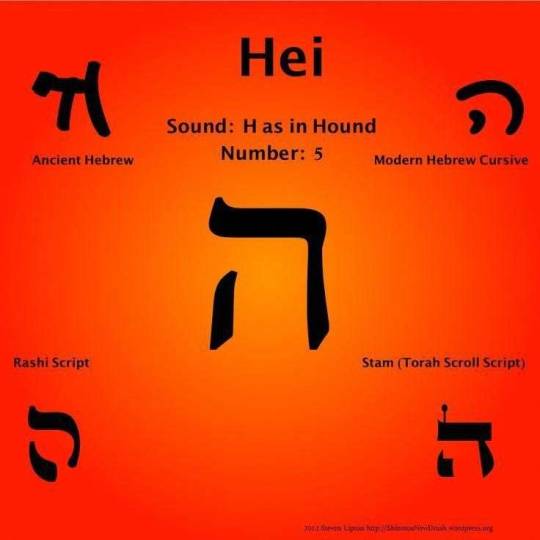
The letter Hey is pronounced with an emphatic "h" sound and is represented by an image of a man triumphantly raising his arms, passionately pointing towards a magnificent sight, as if inviting you to witness its incredible splendor. The purpose of this letter is to signify The" when referring to something significant. By adding this letter as a prefix to the word “erets”, it creates the powerful term ha'erets, which signifies "The Land."
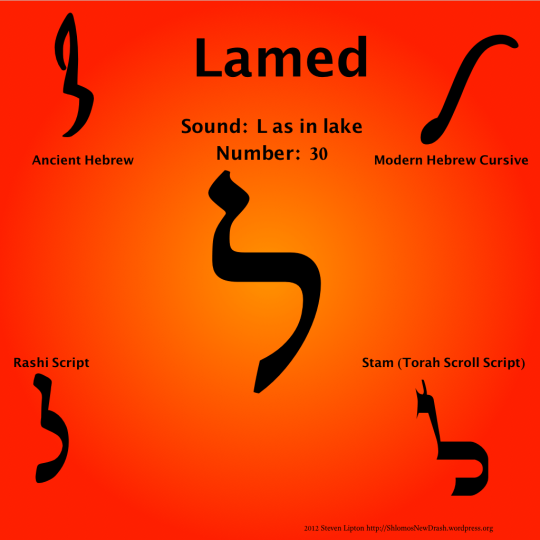
The letter Lamed symbolizes the soothing sound of "l" and embodies a captivating image of a shepherd's staff. This staff, once wielded by the caring shepherd, skillfully guided the sheep towards greener pastures and life-sustaining water sources. The term "le" serves as a prefix to the word "erets" to create "le'erets," which signifies "toward a land." This letter is a crucial designation of direction.
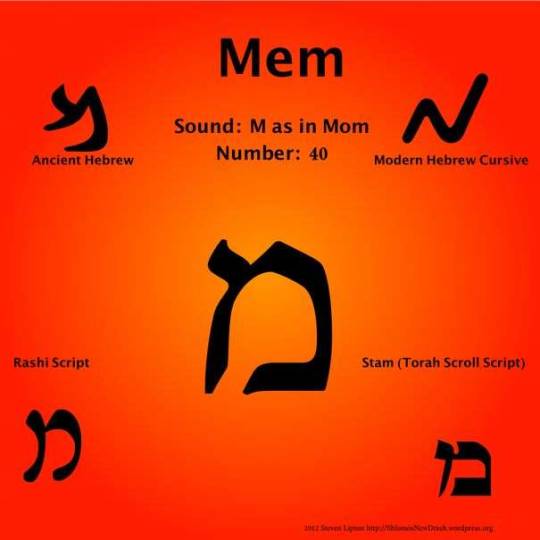
The letter Mem depicts a magnificent "m" sound, showcasing a captivating image of water. Furthermore, it symbolizes the harmonious flow of water in both humans and animals, resembling the sacred essence of life - the vital fluid that courses through our veins, commonly known as blood. Blood carries on from generation to generation, symbolizing “continuity”. It signifies a connection with one's ancestors and a link to the past. When the prefix "me" is added to the word "erets," it forms the word "me'erets," which represents the concept of “origin from a specific land.”
The Ancient Hebrew Vocabulary
Hebrew root words are the fundamental building blocks of the language, created by combining two Hebrew letters. These words are versatile because they can be used as both nouns and verbs. The meanings of individual letters hold significant meaning, which can help unveil the true Hebraic essence of a word. Delve into the profound connections between the meanings of these letters and the meanings of nouns and verbs. Allow me to provide you with a handful of compelling examples.

The initial letter of the Hebrew alphabet is called Aleph and is depicted as a symbol of an ox. Just as the ox represents “strength and power” so does this letter symbolize the same characteristics.

The letter Bet (B) represents a tent or house, a place of residence for the family. When combined, these letters form the word “ab”, embodying the concept of "the power of the home" and embodying the role of the "father."

The first letter here is the Aleph (A), which is depicted as the image of an ox. Just like the mighty strength of an ox, this letter also symbolizes “strength”. The second letter is the Mem (M), which symbolizes “water”. The meaning of "strong water" is revealed through these two letters. It was the Hebrews who developed a technique of boiling animal skins in water to create a substance known as glue. Throughout this process, the skin would gradually decay, ultimately leading to a thick and sticky liquid forming on the surface of the water. The viscous substance was extracted and employed as a formidable adhesive called "strong water". This term originates from the Hebrew word “am”, which symbolizes "mother", the one who firmly unifies the family.

The primary letter in this image is "B," represented by a captivating image of a tent or house. Following that, the second letter, "N," showcases a fascinating picture of a seed. The seed represents the dawn of a vibrant existence, sprouting forth to sow the seeds of a new era. In fact, this profound symbol can be interpreted as a declaration of “perseverance”. When united, these two letters forge the powerful word BeN, signifying the “eternal continuity of our lineage”, serving as the Hebrew word for "son."

The initial letter is the Aleph (A), depicting an ox, symbolizing strength. As the ox exemplifies “mightiness”, this letter also embodies great power. The following letter, hhet (Hh), resembles a tent wall, representing “protection and shelter”. The wall serves as a formidable shield guarding the contents within its boundaries from the external world. When united, these letters give birth to the noun AHh, embodying the essence of a robust barrier and symbolizing the “brother” as the steadfast safeguard of the family.

The first letter is lamed in Hebrew, represented by the picture of a staff. The second letter is called kaph, depicted as the palm of a hand. When the staff is held in the palm, it signifies a “journey or walking”. The verb LaK is used to express the action of “walking or going.”
"Go Down"
The first letter is resh (R), which portrays the majestic countenance of a noble man. The second letter, dalet (D), serves as a captivating depiction of a grand entrance to a tent. Entering or exiting through the door of the nomad's tent required one to stoop down due to its low roof. The verb RaD translates to "go down".

The initial letter, Ayin (A), is symbolized by an eye, conveying the essence of “experience”. As for the second letter, Lamed (L), its pictorial representation is a staff that also signifies a “yoke” placed upon the shoulders. When combined, these two letters form the word AL, which means “to experience the yoke”. As the yoke is lifted up onto the shoulders, this verb implies “going up”. When used as a noun, this same two-letter root signifies a “yoke”.
Uniting
The initial letter, Q, represents a captivating image of the sun gracefully ascending or descending on the horizon. This symbolizes the essence of “unity and gathering”, as the light beautifully merges at the point where the earth meets the sky. The second letter hhet (Hh) is a compelling depiction of a formidable wall that serves as a barrier. When combined, these two letters create the powerful word QaHh, representing the act of “uniting that which has been divided”, the profound act of taking.

The initial letter represents the sound shin (Sh) and depicts the action of pressing with the image of teeth. The subsequent letter, beyt (B), symbolizes a tent or home. The two letters combined create the powerful word ShaB, which symbolizes a “sense of urgency to seek refuge” and signifies the act of “coming back.”

The letter Q represents the rising or setting sun on the horizon, symbolizing “unity and gathering”, as the light comes together at the edge of the world. The second letter, resh (R), depicts the head of a man. When combined, these two letters create the word QaR, which signifies “a gathering of men” and signifies the act of “meeting or calling out”.
An Act of True Understanding
The opening letter, known as dalet (D), portrays a visual representation of the tent entrance - a gateway for easy passage. As for the second letter, ayin (A), it symbolizes the intricate beauty of the eye. These two letters, when combined, create the powerful word DA. It represents the mesmerizing motion of the eye, as if absorbing everything, and signifies “the act of true understanding.”
The Ancient Hebrew Language
The Hebrew Bible was penned by the Hebrews around 2,500 to 3,500 years ago, when their culture and way of life greatly contrasted with our present reality. As 20th century Americans, our interpretation of the words and phrases in the Word of God is often influenced by our culture and lifestyle.
Rain is a prime illustration of how culture can shape an individual's perception of a word. The meaning of rain may hold negativity for a bride and groom getting ready for an outdoor wedding, yet for a farmer in the midst of a drought, that very word carries a sense of optimism and positivity. Rain may be seen as a picnic spoiler by many of us, but for the ancient Hebrews, it symbolized the very essence of life. Without rain, their nomadic existence would come to a halt. It is important to grasp the cultural significance embedded in the words of the Bible, as much can be lost or disregarded without this understanding.
The language of a group of people is intricately linked to their culture. This holds true for the nomadic Hebrews of the Near East, whose language is profoundly intertwined with their nomadic way of life. Every Hebrew word captures a vivid action witnessed during the nomadic odyssey of the Hebrews across the untamed wilderness. When we bring back the Hebraic essence of the text, we discover a prevailing theme that permeates the Bible, shining forth in all its splendor - our enduring journey as nomads through the vast wilderness of life.
Most people wrongly assume that everyone thinks in a similar way. However, the truth is quite the opposite. The thinking processes of different cultures are incredibly diverse, often contrasting like day and night. On this website under the Learn tab, we will delve into Hebrew words and concepts, aiming to gain a profound understanding of the Hebrew mindset. A proper comprehension of ancient Hebrew thought is essential for a thorough understanding of the Bible. When we interpret the Biblical text based on our own perspective, we risk diluting it with modern Greco-Roman thinking.
During my extensive research on the language used in the Bible, I have made a remarkable discovery of three fundamental components to the proper interpretation of the words and ideas within the text.
The Culture
Like any language, Hebrew is deeply intertwined with the culture of its speakers and writers. When reading the Bible, whether in Hebrew, English or any other language, it is essential that it be read through the eyes and mind of the Hebrew culture and not one's own culture. To illustrate this let’s look at Isaiah 40:22: “It is he... that stretches out the heavens as a curtain.”
Based on our cultural knowledge, we can infer that this refers to the formation of stars, which are colossal spheres of blazing gas located billions of miles away from us. However, even though this perspective may be accurate, it is crucial that we disregard our concept and rather comprehend it from Isaiah's viewpoint of the heavens.
Within the Hebrews' goat hair tents, the roof is dark, yet the gaps between the fibers of the material enable tiny beams of light to seep through, creating the illusion of stars in the pitch-black sky. Because of this, the Hebrews perceived the nighttime sky as an expansive canopy, symbolizing “God's presence and protection” enveloping the entire world, His beloved creation.
Action
The languages we use today have been shaped by the ancient Greco-Roman civilization, which cultivated a rich vocabulary of abstract words. Abstract words are those that cannot be tied to any of our five senses: hearing, sight, touch, smell, and taste. Every Hebrew word is connected to a tangible concept, a substance of “action”. An excellent example of this contrast is the word anger, which, from a contemporary standpoint, may seem like an abstract notion.
In Hebrew, the term for anger is אף (aph), which, intriguingly, refers to "a flaring of the nostrils in anger." This vivid word captures the essence of this powerful emotion, conveying a tangible image of its expression. Remarkably, אף (aph) also happens to be the Hebrew word for nose, unveiling an intriguing connection between anger and this vital facial feature. On this website, you will have the opportunity to break free from abstract thinking and embrace the concrete significance of words, as they were originally perceived from a Hebraic standpoint.
Function
In Hebrew thought, the emphasis lies on the “practicality of things”, while we, in our Greco-Roman mindset, tend to prioritize their “outward appearance.” As we delve into the pages of the Holy Scriptures, our minds are incessantly crafting a vivid illustration of the words depicted within. However, we must recognize that the original author seeks not to portray a mere physical image, but rather a profound depiction of “purpose.”
An example of this concept is:
“...and this is how you are to make it, the length of the vessel is three hundred cubits long, fifty cubits wide and thirty cubits high.” (Gen. 6:15)
Does this description provide us with a visual depiction of the ark? Absolutely not. Rather, it elucidates its purpose by emphasizing the tremendous size and capacity of the vessel, highlighting its ability to transport an extensive array of animals.
By keeping these three keys in mind while reading the Scriptures, you will be able to approach the Bible from a Hebrew perspective rather than the Greek perspective that we have been taught since birth.
The Hebrew Bible
The process of translation involves numerous hidden and unfamiliar elements, often overlooked by those who simply read the translated text. Many individuals who read the Bible assume that the English translation is a precise and faithful rendition of the original scripture. However, an exact translation is impossible due to the significant disparities between the language and culture of the Ancient Hebrews and ours.
The translator plays a crucial role in connecting languages and cultures. Given the various possible translations of Hebrew text, the personal beliefs of the translator greatly influence the outcome. The translation of a Biblical text represents the translator's interpretation, shaped by their own theology and doctrine. Readers are compelled to rely on the translator's interpretation as the basis for understanding the text.
Read the full article
1 note
·
View note
Text
Are you confused about the biblical responsibilities of a man? Let us now find out what these responsibilities are and how we can embrace them in our lives.
#biblicalresponsibilities#responsibilitiesofman#dutiesofman#responsibilitiesofaman#menresponsibility#Responsibility#ResponsibilityMatters#ResponsibilityFirst#duties#dutiesandresponsibilities#scripturestudy
0 notes
Photo
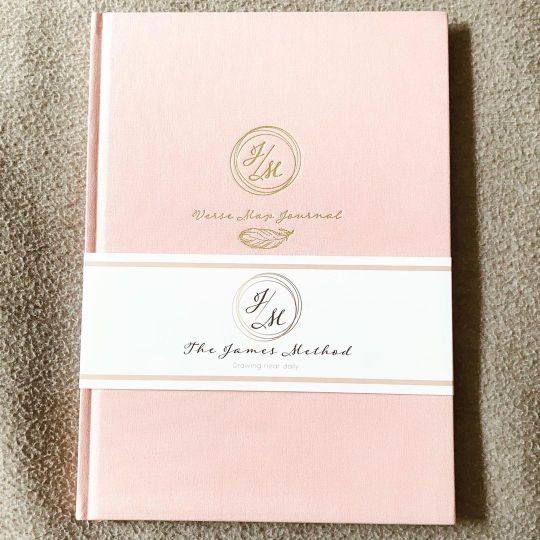
Yay! My verse mapping journal that I ordered from @the_james_method came in the mail today! I kept seeing pictures of it on Facebook and Instagram and decided to order one as a companion to my Write the Word journal that t got a couple months ago from @cultivatewhatmatters 😁 #versemapping #versemappingcommunity #the_james_method #thejamesmethod #biblestudy #biblestudytools #scripturestudy #scripturewriting #scripturewritingjournal https://www.instagram.com/p/Cp7_yGXOTYT/?igshid=NGJjMDIxMWI=
#versemapping#versemappingcommunity#the_james_method#thejamesmethod#biblestudy#biblestudytools#scripturestudy#scripturewriting#scripturewritingjournal
0 notes
Photo

📘•°•📙Quotations in the Scriptures📙•°•📘
📣👉Available On Amazon👈💥
🛒👉Here is the book link:
Quotations in the Scriptures:- https://amzn.to/3XcMx8I
📘✍Author by Randy L. Perkins
✨️✨️✨️✨️✨️✨️✨️✨️✨️✨️✨️✨️✨️✨️✨️✨️✨️✨️✨️✨️
📙🖋The Bible contains quotations and references used by writers and speakers in the books of the Bible. This book identifies these quotations and references, who wrote or spoke the quotations and references and the source of the quotations and references, whether inside the scriptures or outside the scriptures.
📣📕📗
⭐️⭐️⭐️by Randy L. Perkins (Author)
💗💖"
🛒👉Available Instantly on Amazon – Paperback
Order Now:-
Quotations in the Scriptures :- https://amzn.to/3XcMx8I
👉👉 Buy Now:- 👇👇
https://tinyurl.com/cbfswrkm
#QuotationsintheScriptures#RandyLPerkins#KindleBook#Ebook#Paperback#bookish#writersandspeakers#quotationsandreferences#quotations#references#quotationsandreferencesbook#scriptures#scripturestudy
0 notes
Photo

Well, it's a logical question... #nasa #liestheytell #science #scriptureishistory #strongdelusion #YAHWEHandYESHUAareone #readforyourself #scripturestudy #YESHUASavesALL #YESHUAiscoming #YESHUAistheTorah https://www.instagram.com/p/CkElLQQv5Is/?igshid=NGJjMDIxMWI=
#nasa#liestheytell#science#scriptureishistory#strongdelusion#yahwehandyeshuaareone#readforyourself#scripturestudy#yeshuasavesall#yeshuaiscoming#yeshuaisthetorah
0 notes
Photo

@therealsweetspot Your feelings will catch up! A while back I saw @wandamulzac post “your feelings will catch up”. If you give your feelings more power than your faith you will often find yourself in a state of anxiety, frustration, depression, insecurity or mental stress. Growing and maturing for me means learning how to live by faith in God and by the truth of God’s Word instead of living by my feelings, like the psalmist in Psalm 42 describes: ⠀⠀⠀⠀⠀⠀⠀⠀⠀ Why am I so overwrought? Why am I so disturbed? Why can’t I just hope in God? Despite all my emotions, I will believe and praise the One who saves me and is my life. Hopefully it goes without saying that feelings are not inherently bad. Emotions enrich our lives and are absolutely necessary to building a close relationship with God and with people around us. ⠀⠀⠀⠀⠀⠀⠀⠀⠀ Without emotion, we would never be able to experience compassion and empathy, or indignation and inspiration. Even emotions we perceive as negative, like shame and regret, can bring us closer to other people by prompting us to seek reconciliation when we’ve done something wrong. ⠀⠀⠀⠀⠀⠀⠀⠀⠀ But emotions aren’t meant to replace our relationship with God: ⠀⠀⠀⠀⠀⠀⠀⠀⠀ In the end they will be destroyed. Their own emotions are their god, and they take pride in the shameful things they do. Their minds are set on worldly things. Philippians 3:19 GW Have your emotions become your God? That means we can start to worship them, obey them, and rely on them in ways we really shouldn’t. ⠀⠀⠀⠀⠀⠀⠀⠀⠀ Trust what God’s word says, your feelings will catch up! ⠀⠀⠀⠀⠀⠀⠀⠀⠀ #DailyScripture #DailyPrayer #DailyBible #PrayerLife #BibleQuote #SoulScripts #JesusCalling #JesusOverEverything #JoyOfTheLord #ScriptureStudy #DailyEncouragement #GraceUponGrace #BibleGram #DailyDevo #ChristianPost https://www.instagram.com/p/ChU69vlu-1D/?igshid=NGJjMDIxMWI=
#dailyscripture#dailyprayer#dailybible#prayerlife#biblequote#soulscripts#jesuscalling#jesusovereverything#joyofthelord#scripturestudy#dailyencouragement#graceupongrace#biblegram#dailydevo#christianpost
0 notes
Text
Scripture Study: the devil
Mind you not the last piece of notes with random penned words, haha, one was just writing to write. Honestly, one quite likes the way cursive feels to write. Especially if one is getting into an ’academia’ mood, haha.

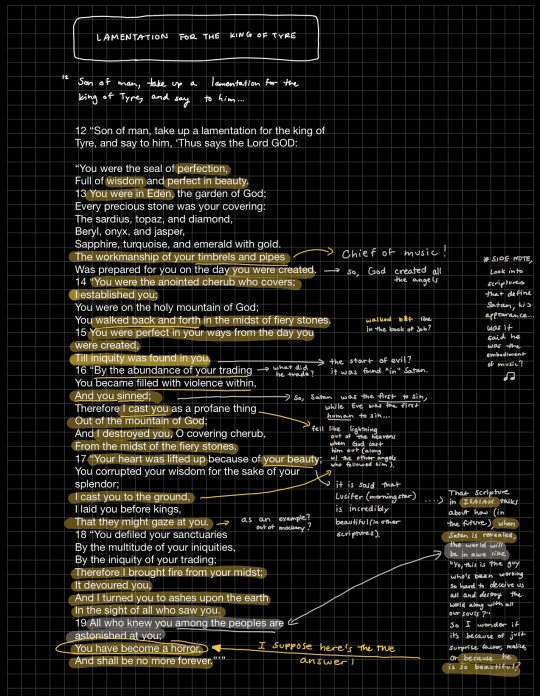
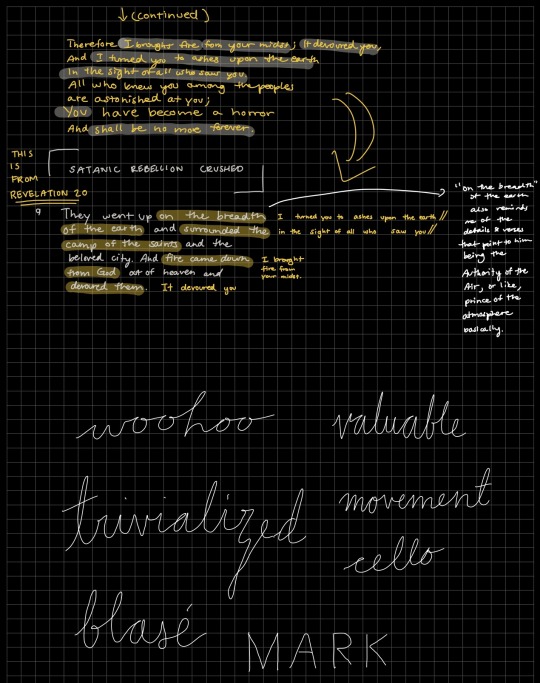
#bible study#studyblr#academia#dark academia#langblr#aesthetic#study motivation#bujo#bullet journal#studyspo#studylife#bibleverse#biblescripture#christian#bible reading#bible verse#bible scripture#scripture#bible notes#scripturestudies#scripturestudy#scripture study#digital notes#calligraphy#penmanship#aesthetic notes
13 notes
·
View notes
Text

Jesus is Life ✝️
#JesusisLife#Praying#Prayer#PrayerWarrior#PowerofPrayer#Pray#KeeptheFaith#WordofGod#GodsPromises#Bible#Scripture#BibleQuotes#ReadtheBible#ScriptureStudy#Christian#Gospel#SeekHimFirst#Salvation#ScriptureVerse#BibleVerse#PaulBackholer#MathewBackholer#ByFaith#ByFaithMedia#Backholer#ChristianInspiration#Christianity
12 notes
·
View notes
Text
youtube
#BookOfGenesis#Bible#OldTestament#Genesis#Christianity#Religion#Scripture#Faith#God#Jesus#BibleStudy#ScriptureStudy#Christian#BibleVerse#BibleVerses#BibleReading#BibleJournaling#BibleJournal#BibleArt#BibleQuote#BibleQuotes#Youtube
0 notes
Photo
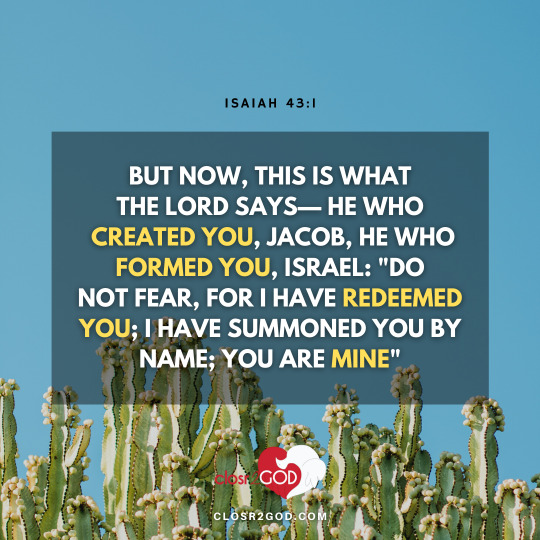
AMEN if you’re thankful . . #god #godblessamerica #jesuschrist #godisgreat #bibleverses #holybible #prayerworks #jesusisking #godschild #faithingod #faithquotes #biblelettering #manofgod #godisable #jesusloves #faithinspired #bibledaily #scripturestudy...
0 notes
Text
Jesus Heals Peter’s Mother-in-Law #scripturecentral #scripturestudy #com...
0 notes
Text
soooo good! i haven’t been afraid to call on Him chile😮💨
0 notes
Photo

AMEN if you’re thankful . . #christian #godblessamerica #gospel #verseoftheday #biblejournaling #godlovesyou #godschild #christianwomen #jesuslovesme #verses #jehova #godwins #godisable #goddessvibes #goddessenergy #christianchurch #prayerrequest #scripturestudy...
0 notes